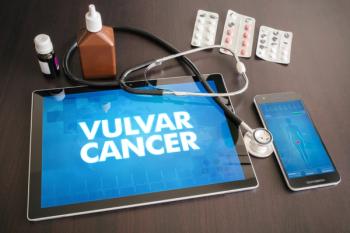
Contemporary OB/GYN week in review: ACOG 2025, prenatal diabetes, and more
Review some of the top stories from the Contemporary OB/GYN website over the last week, and catch up on anything you may have missed.
Thank you for visiting the Contemporary OB/GYN® website. Take a look at some of our top stories from last week (Monday, May 19, 2025 - Friday, May 23, 2025), and click each link to read and watch anything you may have missed.
Expert discussions from the 2025 ACOG meeting
Thank you for visiting the Contemporary OB/GYN website, and for following along with our coverage of the 2025 American College of Obstetrics & Gynecology (ACOG) Annual Clinical & Scientific Meeting held in Minneapolis, Minnesota.
We spoke with multiple experts at the conference about topics ranging from individualized vasomotor symptom treatment to advancements in diabetes monitoring and treatment. This recap video will highlight some of the discussion points from our interviews conducted with the presenters.
Amy Valent DO, MCR, highlights new tech for prenatal diabetes management
In a recent interview with Contemporary OB/GYN, Amy Valent, DO, MCR, associate professor in the Maternal-Fetal Medicine Division at Oregon Health & Science University, discussed advancements in technology for managing prenatal diabetes.
These advancements include new glucose monitoring technology that improves pattern identification in patient glucose. Improved treatment such as insulin smart pens have also been developed, allowing for more sophisticated dosing strategies. Valent reminded providers to individualize these tools based on the needs of their patients.
Angie Lee, MD, FACOG, discusses bridging the menopause care gap
As conversations around women’s health continue to evolve, menopause remains a critical, but often overlooked, milestone. To better understand this life stage and improve care delivery, Bayer commissioned 2 surveys conducted by The Harris Poll: one exploring the experiences of US women aged 40-70 years in menopause or postmenopause, and another capturing insights from healthcare providers in OB/GYN and primary care settings.
The results revealed persistent gaps in knowledge, communication, and symptom management, underscoring the need for more proactive and informed dialogue. Contemporary OB/GYN spoke with Angie Lee, MD, FACOG, executive medical director for Women’s Healthcare at Bayer U.S. Medical Affairs, about what these findings mean for patients and providers—and how they can help shape the future of menopause care.
Texas abortion law linked to spike in mental distress
Mental distress among reproductive-aged women has increased by Texas’ abortion restrictions, according to a recent study published in JAMA Network Open.
There were 79,609 patients included in the final analysis, 43.9% of whom were aged 18 to 29 years, 38.3% 30 to 39 years, and 17.8% 40 to 44 years. Of these patients, 25.5% were women in Texas, with a frequent mental distress rate of 14.2% at baseline and 21.9% after SB8, representing a 7.7% increase.
In comparison, the increase among male patients was 3.9% between periods 1 and 2. Trends at baseline did not significantly differ between female and male patients but disproportionately rose among female patients after SB8. These differences were more pronounced among younger patients vs older patients.
Megan Wasson, DO, on advancing endometriosis care through imaging, surgical precision, and mentorship
In an interview at the 2025 ACOG Annual Clinical and Scientific Meeting, Megan Wasson, DO, FACOG, chair of gynecology at Mayo Clinic in Arizona, discussed her presentation on "Increasing Skill and Safety in the Identification and Excision of Endometriosis" at the meeting.
Endometriosis can present with diverse visual features that often differ from traditional descriptions. “In residency, I was taught that endometriosis looks like a powder burn lesion, but really that's only about 25% of the time,” said Wasson. “The other 75% looks different than a powder burn lesion.”
This variability makes visual recognition and training essential. Wasson emphasized the importance of teaching clinicians to identify atypical presentations. Advances in magnification through laparoscopy and robotic surgery have contributed to this effort. “Being able to really zoom in on these lesions and see the difference in normal versus abnormal peritoneum is incredibly helpful,” she said.
Newsletter
Get the latest clinical updates, case studies, and expert commentary in obstetric and gynecologic care. Sign up now to stay informed.











